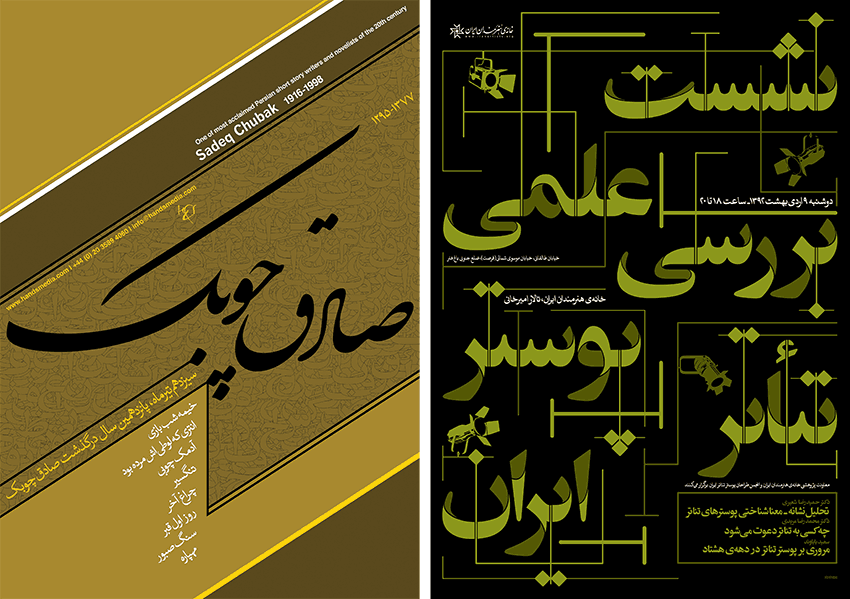Georgia Tribuiani is an Italian-born designer and director who created Unire I Punti. She started her career working as set designer for theaters and exhibitions and then moved to VFX, starting as a matte painter for film. She quickly learned how to animate her designs and illustrations and worked as a motion designer on the brand identities of National Geographic, History Channel, Fox, and more.
Georgia left Rome to move to Los Angeles where she worked as an Art Director at Prologue Films designing graphic packages for the iconic awards shows the Academy Awards, MTV Movie Awards and VMAs. Currently, she works at Psyop in Venice on both animation and live-action commercial campaigns.
Georgia:Unire i Punti is the title of my retrospective that took place in Italy in September 2012. In 2011, my work was selected for the Venice Biennale and featured along side other works of former students of Italian Fine Arts schools. My alma mater decided to dedicate a personal exhibition for each student the following year. For my exhibition, the curator suggested that we do a retrospective to show the ouvre of my career path. I was asked to design the catalog as well as the identity and marketing collateral for the exhibition.
What what your overall inspiration for the project?
Georgia: In the choosing of my education and career, I followed my instincts and my dreams. For the theme of the exhibition and catalog, I wanted to communicate how each experience, apparently unrelated, led me to my current destination. I decided to start my visual research with maps and I came across some old illustrations of constellations used for travel in ancient times. These constellation maps inspired the name Unire I Punti (Italian for Connecting the Dots) as a metaphor for a unique and varied path.
Old illustrations of constellations.
Why did you choose the typefaces you did, and what was the reasoning behind the design of the letter forms?
Georgia: This project is a collaboration with Ana Gomez Bernaus. We met when I had a clear vision of what I was looking for. I really liked her work and sensibilities for lettering. She started working on the lettering of the title. Ana designed an original display font, inspired by the name and theme of the exhibition that resembled the constellation maps. In order to reinforce the theme of the exhibition, she proposed to use the same lettering for all the chapters as was used for the title. The only limitation that we had was in the size and number of pages, because it was going to be part of a collection.
Ana: When Georgia came to me with this project I saw a great opportunity to develop a new display font. From the title of the exhibition it was easy to conceive a letterform design that made reference to it. Unire I Punti is literally constructed by lines that connect dots.

Ana Gomez Bernaus and Georgia Tribuiani
Can you speak to the influences of the type design, typesetting and any production challenges?
Ana: In my type work, I always focus on the details. I like working with complex structures that have a textural quality. In this way, each letterform can be appreciated both by its formal and illustrative quality and by its function as a letter. Since Unire I Punti was thought to be used for the titles of the chapters, it couldn't be an over-decorative lettering experiment. It needed to be readable and clear. At the same time, the letters needed to appear to be dimensional, for which reason there are two different line thicknesses and three dot sizes.
A challenge that had to be addressed quickly was the fact that the titles needed to look organic even though they were built by pure geometric forms. Georgia's work has a very human quality. It is emotional, not aseptic or mechanical. She uses textures form materials like fabric, wood or ink. Her work evolves thought the years. In Italian, many words contain pairs of letters, and once I started the design of the titles it became obvious that placing two "s" that look exactly the same would totally destroy the casual quality I was looking for. In order to avoid that too mechanical effect, I designed at least two versions of each letter, sometimes three. That created the visual variety that allows each letter (and word) to appear as a unique piece. Unique like a life path between its own dots.
The font used for the body of the text is Knockout. When we started working on this project, Georgia pointed out that she wanted a sans serif font because she felt more identified with that choice. I decided to suggest using Knockout because it is a very flexible font family with many weights and widths, which allows specific solutions for each need. Subtitles are different then body text or foot notes, but they are all part of a whole.
Lastly, each spread was designed individually, taking into account the materials we had, images, text and foot notes. All pages follow a flexible multi column, multi row grid that provided a perfect structure to create a catalog where no two pages look alike but all of them relate to each other.
As far as the production is concerned, we decided that it would be a good idea to opt for an offset paper, with matte finish and go away from the glossy option that was given to us by default. Working on offset paper made it specially important to pay attention to the really thin lines that connected the dots on the titles. This was also a matter that required our attention when we printed the letterpressed covers.
You can see more of Georgia's work on georgiatribuiani.com and more of Ana's work on her site anenocena.com.





















